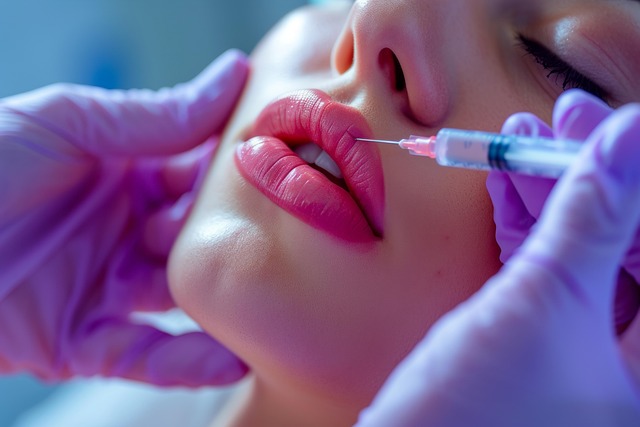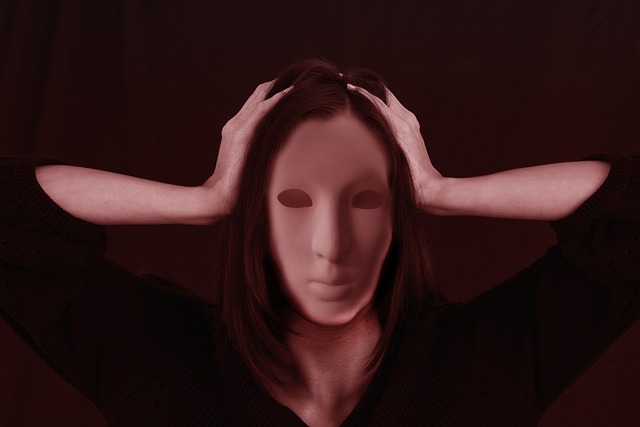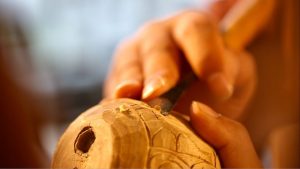Botox, derived from bacteria, is a popular non-invasive treatment for minimizing signs of aging (crow's feet) and alleviating migraines. It works by relaxing facial muscles to prevent dynamic wrinkle formation around the eyes and temporarily paralyzing muscle tension associated with migraines. While effective for both cosmetic enhancement and therapeutic relief, Botox carries temporary risks like bruising, swelling, or discomfort at injection sites. Choosing a qualified provider is crucial for minimizing these risks and achieving desired outcomes, including significant reduction in migraine frequency and intensity.
“Uncover the secrets to achieving youthful looks with Botox, especially targeting the stubborn crow’s feet that can give away your age. This comprehensive guide explores how Botox has emerged as a popular choice for cosmetic enthusiasts seeking to smoothen fine lines and wrinkles non-surgically. From understanding the causes of crow’s feet to delving into the science behind Botox treatments, we’ll also highlight its surprising benefits for migraine relief. Learn about the simple procedure, potential risks, and expert advice on choosing the right provider for safe and effective results.”
Understanding Crow's Feet: Causes and Symptoms

Crow’s feet are a common concern for many, characterized by fine lines and wrinkles that radiate from the corners of the eyes, often described as looking like birds’ feet—hence the name. These facial lines are primarily caused by muscle movement, especially when you smile, frown, or squint. Over time, repeated muscle contractions lead to a breakdown of collagen and elastin fibers, resulting in permanent creases on the skin’s surface.
While Botox is commonly associated with migraine relief, its primary role in addressing crow’s feet lies in relaxing facial muscles. By injecting small amounts of botulinum toxin into specific areas, including the forehead and around the eyes, muscle activity is temporarily reduced, preventing the repetition of those telltale lines and giving the skin a smoother appearance. This non-invasive procedure offers a effective solution for individuals seeking to minimize the signs of aging without major surgery or extensive downtime.
Botox: A Popular Choice for Cosmetic Concerns

Botox, a protein derived from bacteria, has gained immense popularity as a cosmetic treatment option. It’s not just about smoothing out wrinkles anymore; Botox has established itself as a versatile tool in the quest for enhanced beauty and improved self-confidence. Beyond its use for reducing fine lines and crow’s feet, Botox has also been recognized for its efficacy in migraine relief. By temporarily paralyzing specific muscles, Botox can significantly reduce the frequency and intensity of migraines, offering a non-invasive alternative to medication.
This dual role—as a cosmetic treatment and a therapeutic option for chronic migraine sufferers—has contributed to Botox’s widespread appeal. Its safety profile, combined with its ability to produce noticeable results, makes it a preferred choice for individuals seeking to address both aesthetic concerns and debilitating headaches.
The Science Behind Botox for Crow's Feet

Botox, a protein derived from bacteria, has gained popularity as a non-invasive cosmetic treatment for reducing the appearance of wrinkles, especially crow’s feet—fine lines that form at the outer corners of the eyes. When injected into specific muscles, Botox blocks nerve signals, temporarily paralyzing or weakening them. This action prevents the overactive muscle contractions that contribute to dynamic wrinkle formation around the eyes.
For individuals seeking Botox for migraine relief, this treatment can also be effective in preventing headaches by reducing muscle tension in the neck and head regions. The same principle applies to crow’s feet—by easing muscle strain around the eyes, Botox offers a subtle yet noticeable improvement in skin texture, providing both aesthetic benefits and potential pain reduction for those who experience facial muscle-related discomfort.
Benefits of Botox Treatment for Migraine Relief

Botox has emerged as a game-changer in the realm of migraine relief, offering a non-invasive and effective solution for those suffering from chronic migraines. The treatment involves injecting a small amount of Botox into specific muscles in the head and neck area, which are often responsible for migraine pain and symptoms. By relaxing these muscles, Botox can significantly reduce the frequency and severity of migraines, providing patients with much-needed relief.
One of the key benefits of using Botox for migraine relief is its ability to target the root cause of the pain. Unlike over-the-counter medications that merely mask symptoms, Botox treats the underlying muscle tension and inflammation that contribute to migraines. This targeted approach can lead to long-lasting results, with many patients experiencing a substantial decrease in migraine episodes over time. Additionally, Botox treatment is relatively quick and minimal, making it an appealing option for those seeking alternative or complementary treatments for their migraines.
The Procedure: What to Expect During and After

The procedure for Botox injections is relatively straightforward and non-invasive. During the treatment, a qualified healthcare provider will carefully inject small amounts of Botox into the muscle groups around your eyes, focusing on the areas responsible for the formation of crow’s feet. You may experience some mild discomfort during the injections, but most providers use a topical numbing cream to minimize any sensation.
After the procedure, you can expect some redness and swelling at the injection sites, which typically subside within a few hours. You might also notice slight bruising, but this usually disappears after one to two days. It’s important to remember that the effects of Botox for crow’s feet start to appear gradually, with full results usually visible about a week after treatment. In terms of Botox for migraine relief, the process is similar, targeting specific muscle groups to reduce headache frequency and intensity.
Potential Risks and Side Effects: What You Should Know

While Botox is commonly known for its ability to reduce the appearance of fine lines and wrinkles, including crow’s feet, it’s essential to be aware of potential risks and side effects before considering treatment. Unlike its popularity for migraine relief, which can significantly decrease frequency and intensity, cosmetic uses like targeting crow’s feet focus on muscle relaxation to prevent dynamic wrinkle formation.
Unlike surgical procedures, Botox offers a minimally invasive approach; however, it’s not without drawbacks. Common temporary side effects include bruising, swelling, or discomfort at the injection site. In rare cases, patients may experience more severe reactions, such as headaches, drooping eyelids, or difficulty blinking. It’s crucial to choose an experienced provider who can minimize these risks and ensure optimal results for achieving a natural, youthful appearance without compromising overall facial function.
Finding a Qualified Provider for Safe and Effective Results

When considering Botox for crow’s feet, finding a qualified provider is paramount for achieving safe and effective results. It’s crucial to look beyond simple price tags and instead focus on practitioners with extensive experience in aesthetic treatments. Reputable providers will have a proven track record, positive patient reviews, and a deep understanding of Botox administration techniques tailored to specific facial areas.
In addition to their expertise, seek out providers who prioritize patient safety. This includes those who use sterile, single-use needles and adhere to proper sanitization practices. Some even offer consultations to discuss your concerns, anticipate potential side effects, and address any questions you may have—a key step in ensuring a positive experience and the desired outcome, including Botox for migraine relief, as proper injection techniques can help alleviate headache symptoms for some individuals.
